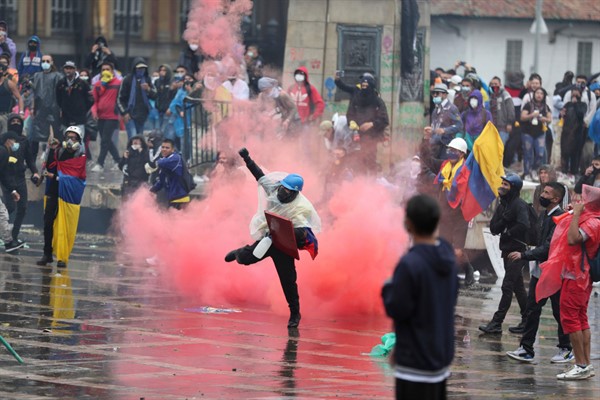For more than a week, crowds of Colombians have taken to the streets to vent their anger at the government. It began on April 28, with a general strike organized in response to a controversial tax reform proposal that has since been withdrawn by President Ivan Duque’s government. But the harrowing repression of the demonstrations by Colombian security forces has added fuel to the fire, and the protests have evolved into a general show of discontent with Duque’s unpopular right-wing government.
The scenes playing out across Colombia today mirror the social protest movement that erupted in 2019, amid similar uprisings across South America. Many of the desperate economic conditions that Colombians are protesting persist elsewhere in the region, made worse by the coronavirus pandemic, leading many observers to warn that another wave of unrest could rock the continent.
So far, at least 26 people have been killed and hundreds more injured during the ongoing protests in Colombia. Amnesty International said it had also documented “arbitrary detentions, acts of torture and sexual violence, and reports of people disappearing.” Reports from the southwestern city of Cali even described a “massacre” on Monday night, when police opened fire on hundreds of protesters, resulting in at least five deaths.

